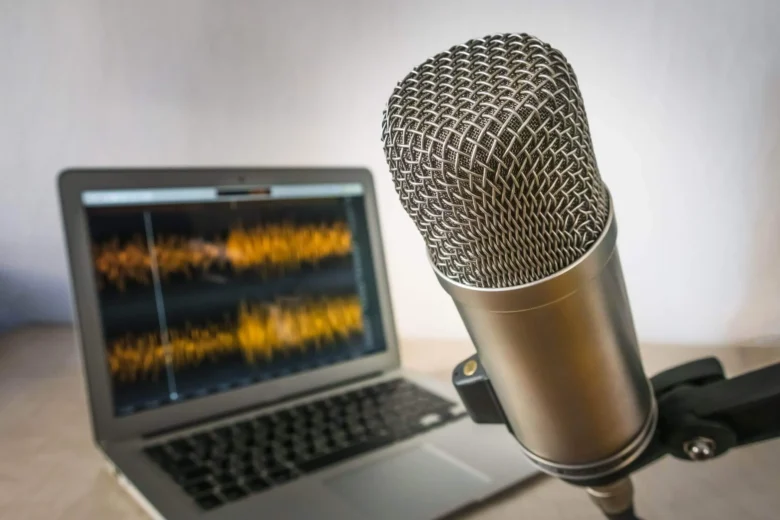The media landscape has changed dramatically over the last decade. Podcasts and digital audio have become a powerful force in our daily lives. Radio and television once dominated, they are no longer the dominant media. Audio-first entertainment, education, and information are attracting millions of listeners around the world. This shift is more than a trend; it signals a fundamental shift in the way we consume entertainment and information.
Understanding the reasons why podcasts are so popular can reveal insights into lifestyle choices and technology adoption. Digital audio is now a part of almost every aspect of our daily lives, from busy professionals searching for information during their commutes to fitness fans seeking entertainment during workouts.
Convenience and Accessibility
Podcasts provide the flexibility that modern life requires. Digital audio content is more flexible than traditional media, which requires a lot of time and concentration. It can be easily integrated into daily routines. Listeners can take in information while they commute, exercise, cook, or complete household chores.
Accessibility goes beyond convenience. Podcasts allow listeners to gain access to content created by creators around the world. In rural America, a person can listen to educational content produced in Australia or a comedy program created in London. The global reach of content has revolutionized the way we consume it.
Technology has accelerated the smartphone revolution. You can readily find podcast apps and download most content for offline listening.aThis capability allows listeners to access their favorite shows without internet connectivity. The technoestablished technological foundation has removedraditional barriers to audio content consumption.
Variety of Content
Podcasts offer a content landscape unlike any other. The range of topics available is seemingly limitless, from true crime investigations to business advice to comedy shows to academic lectures. The variety of topics available ensures that there are content creators for every niche audience.
In this environment, independent creators thrived. Podcasters are free to explore unconventional formats and experiment with storytelling techniques. They can also explore specialized topics without the restrictions of traditional broadcasting. Podcasting’s creative freedom has produced innovative content that is often more engaging and authentic than corporate-produced alternatives.
FormPodcasts offer a variety of format lengths. Casts can be short, five-minute newscasts or long-form conversations. Listeners can choose the content they want to listen to based on their attention and time availability.
Personal Connection
Podcasts are a wonderful way to create a personal listening experience. They foster strong connections between the creators and their audiences. Audio-only formats encourage a personal dialogue, giving listeners the feeling of being part of a private conversation. Regular podcast listeners, who have never met the hosts, often describe them as friends. Podcasts are known for their long-form, consistent content. Podcasts, unlike short television segments or articles, allow creators to gradually develop their personalities and viewpoints. Listeners get to know the hosts’ humor, speaking style, and personal stories. This creates a parasocial relationship that increases engagement.
Comment sections, social media interaction, and live events, which many podcasters host, further strengthen these connections. Listeners form podcast communities around similar interests. Such interaction allows them to connect with other audience members beyond the original creators.
Cost-Effectiveness
Financial factors play an important role in the adoption of podcasts. The majority of podcasts are available for free and supported by advertising. This aspect is in stark contrast to streaming services, cable subscriptions, and other entertainment options, which require monthly fees.
Even premium podcast subscriptions are typically cheaper than traditional media. Many platforms have extensive free tiers that include optional premium features. This allows listeners to enjoy quality content, regardless of their financial circumstances. Podcasts are particularly popular during times of economic uncertainty because they’re affordable.
Podcasting is a low-cost way for content creators to get into the media industry. The low-cost entry point of podcasting allows content creators to create without significant investment.
Multitasking
Podcasts and digital audio are the best mediums for multitasking. This ability is in line with the modern lifestyle, where people want to maximize both productivity and entertainment at once. Audio content does not require visual attention. This feature allows listeners to focus on other tasks.
Podcasts are essential companions to routine activities because of their multitasking ability. Commuters can turn their commute into a learning experience, while exercisers are motivated by engaging content. People Completing mundane tasks also provides entertainment or education. This approach offers cognitive benefits that extend beyond merely saving time. Listeners have reported that combining intellectual content with physical activity enhances both experiences. This combination creates positive associations, which encourage continued engagement in both activities.
The Future of Audio Entertainment
Podcasting is a growing trend that shows no signs of slowing. Digital audio is likely to capture a larger share of the audience as technology improves and content creators create more sophisticated productions. The adoption of smart speakers, improved car integration, and enhanced mobile experiences will further embed podcasts into our daily lives.
This phenomenon represents a fundamental shift in media consumption habits. People are consuming content that adapts to their lifestyles, rather than forcing them to change. Podcasts and digital music have been able to position themselves as a perfect medium in our multitasking, mobile, and personalized world.
Convenience, variety, affordability, personal connection, and multitasking capabilities combine to create a package that is difficult to match by traditional media formats. Podcasts will grow in popularity as more people become aware of these benefits. These features will help to cement digital audio’s dominant position among modern media formats.
FAQs
1. How often do you listen to podcasts?
Recent studies indicate that more than 100 million Americans are listening to podcasts every month, and the number continues to increase across all age groups.
2. What equipment is required to listen to podcasts?
All you need is a computer or smartphone with internet. Many devices have built-in podcast applications, but many people prefer to use dedicated apps such as Spotify or Apple Podcasts.
3. Are podcasts free?
Most podcasts are free and supported by advertising. Although some creators charge for premium content, there are still many free options.
4. How can I find podcasts that are relevant to my interests?
Many podcast platforms have search and recommendation algorithms. You can browse popular categories or search for podcasts by topic. Or, you can ask your friends to recommend them based on their shared interests.
5. Can I listen without an internet connection to podcasts?
Most podcast apps let you download episodes to listen offline. This is perfect for flights, commutes, or other areas where internet connectivity is poor.




